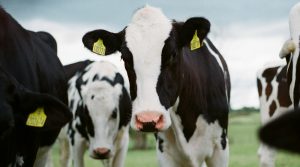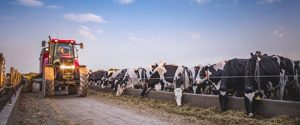
The dairy herd could be heading to its lowest point in the past 30 years, the bank said in its ANZ’s latest Agri Commodity Report.
The 2021/22 forecasts are for a dairy cattle herd of 2.3 million head and a milking herd of 1.4 million head.
But the bank pointed to increased average milk yields per cow and adoption of technology on farm as positive trends.
“To the industry’s credit, it is admirable that the forecast average yield for 2021/22 of around 6600 litres is more than double the average figure in 1983/84,” the report said.
ANZ Head of Agribusiness Mark Bennett said the domestic dairy production sector might be reaching a structural floor.
“In the same way that Australia’s sheep industry has done over the past decade, this could see dairy herd numbers flatten out, before potentially starting to rise again,” Mr Bennett said.
“While sheep and beef cattle prices remain high, there will still be competition for some dairy country, but this may well also level out, given the strength of today’s farmgate milk prices.
“Additionally, while labour availability will also be a challenge for some dairy producers, technological advances in the industry are likely to reduce this in the long term.”
Mr Bennett was upbeat about the outlook for the industry.
As the dairy industry headed into 2022, a combination of global and domestic factors had combined for a positive outlook.
“In terms of global competition, not only are the major competitors producing less milk, for a range of reasons, but the biggest exporter, New Zealand, may be past ‘peak milk’, reducing Australia’s competition in the long term,” he said.
“This long-term reduction in supply could support sustained higher prices for our producers.”
Mr Bennett said dairy demand would be sustained by consumers increasingly pursuing healthier diets, especially in the wake of COVID-19 pandemic,
“These factors also mean that the flow of outside investment into both dairy production and processing could well grow in 2022, ” Mr Bennett said.
























